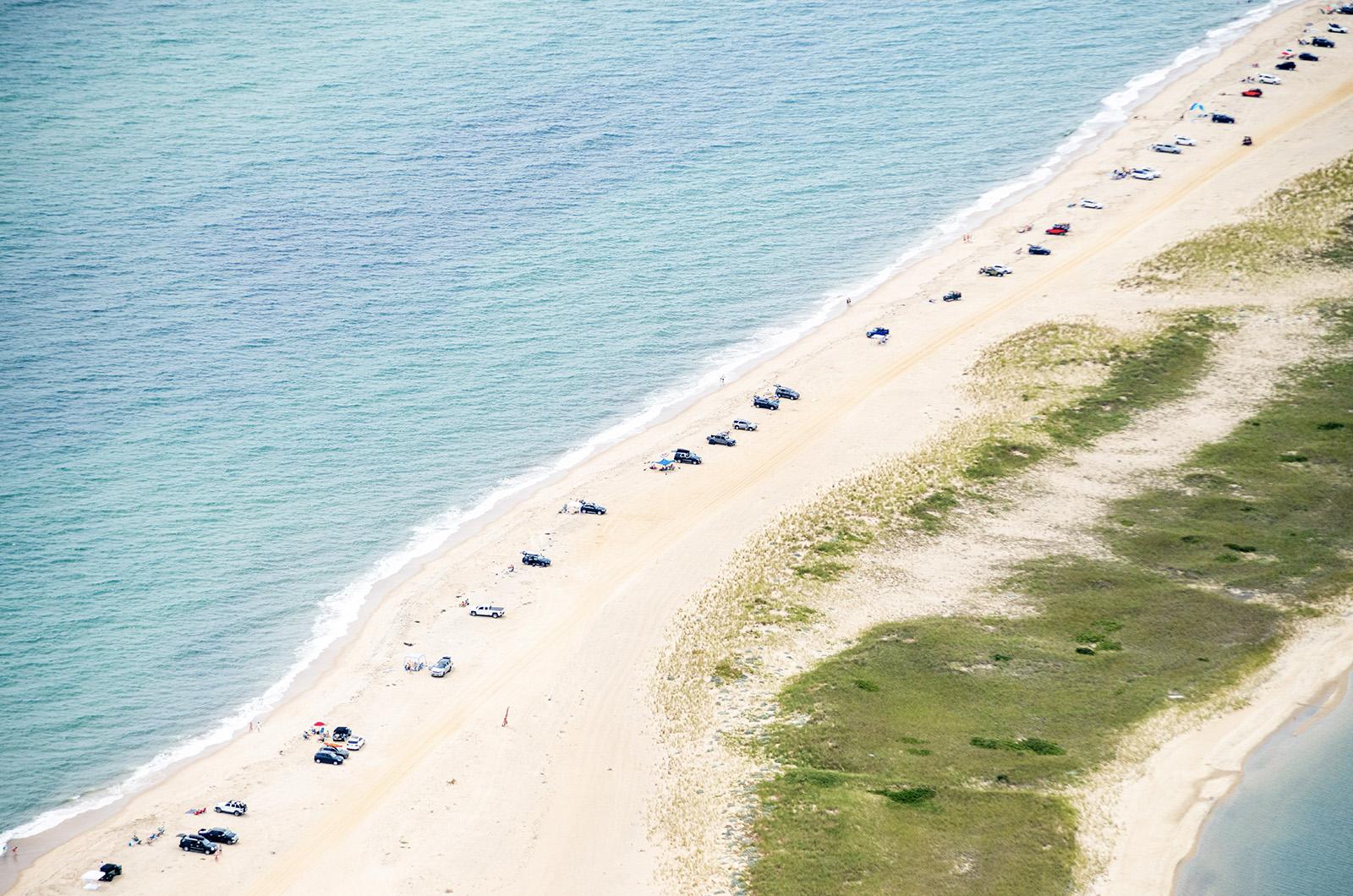A vunerable strip of shorefront on Norton Point is being bolstered this week as The Trustees of Reservations start to retreat from managing the popular beach.
On Feb. 13, the town of Edgartown, in partnership with Dukes County and the Trustees, commenced the second phase of restoring the dunes along Norton Point.
The project involves moving 3,000 cubic yards of sand along the barrier beach connecting Edgartown and Chappaquiddick, supplementing the 11,000 cubic yards moved in the first phase last year. Norton Point, a key habitat for nesting shorebirds, is particularly vulnerable to erosion, having suffered a breach on its eastern side earlier this winter.
Once the sand is moved and shaped into dunes, landscapers will plant 155 bundles of beach grass to combat erosion and reinforce the area ahead of nesting season this April.
“It’s always better to plant the grass earlier so it has time to take hold,” Trustees Islands director Darci Schofield said.
Trustees director of coasts and natural resources Cynthia Dittbrenner said the dune shaping should finish up by the end of next week, with beach grass planting taking place later in March. The project is not affected by the breach, Edgartown conservation agent Jane Varkonda said, since it takes place on the opposite side adjacent to South Beach.
`“I just checked in this morning, and it appears to be going very well,” Ms. Varkonda said Monday.
Norton Point is in a period of flux as the Trustees relinquish management of the beach and Edgartown seeks to take over when the Trustees’ contract ends March 31.
The Trustees had received $100,000 in American Rescue Plan Act funding to complete the new phase, which has since been supplemented with $60,000 from the town, Ms. Varkonda said. In January, the Trustees expressed doubt that the dune restoration project could happen on budget and on schedule, drawing ire from the town.
The Trustees had originally planned to outsource sand for the dunes, Ms. Varkonda explained, which would have cost $100,000 just to bring the sand on-Island. Instead, the project will use sand sourced entirely from local dredging projects.
“The saving grace was really the town finding a local sand source, bringing costs down significantly,” Ms. Dittbrenner said.
Most of the sand being used came from the Little Bridge dredging, Ms. Varkonda said. Before the sand can be used for dune restoration, it must go through a sieve to remove any cobble, which will be used in future town projects.
Despite the back-and-forth last month, both the town and the Trustees are relieved to have worked out a solution to keep beach nourishment on schedule.
“We’re all working together the best we can to do right by the beach,” Ms. Varkonda said.






Comments (2)
Comments
Comment policy »